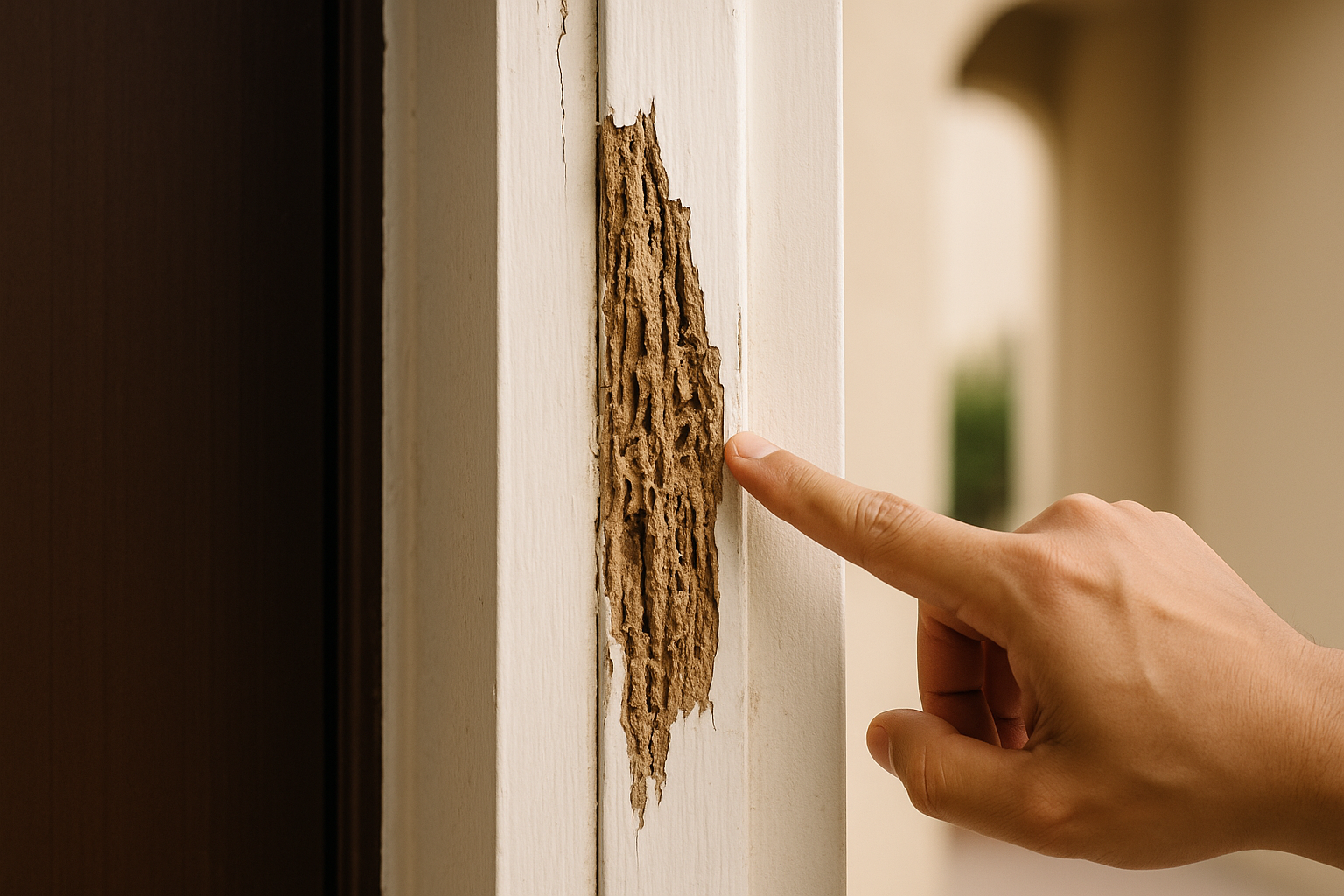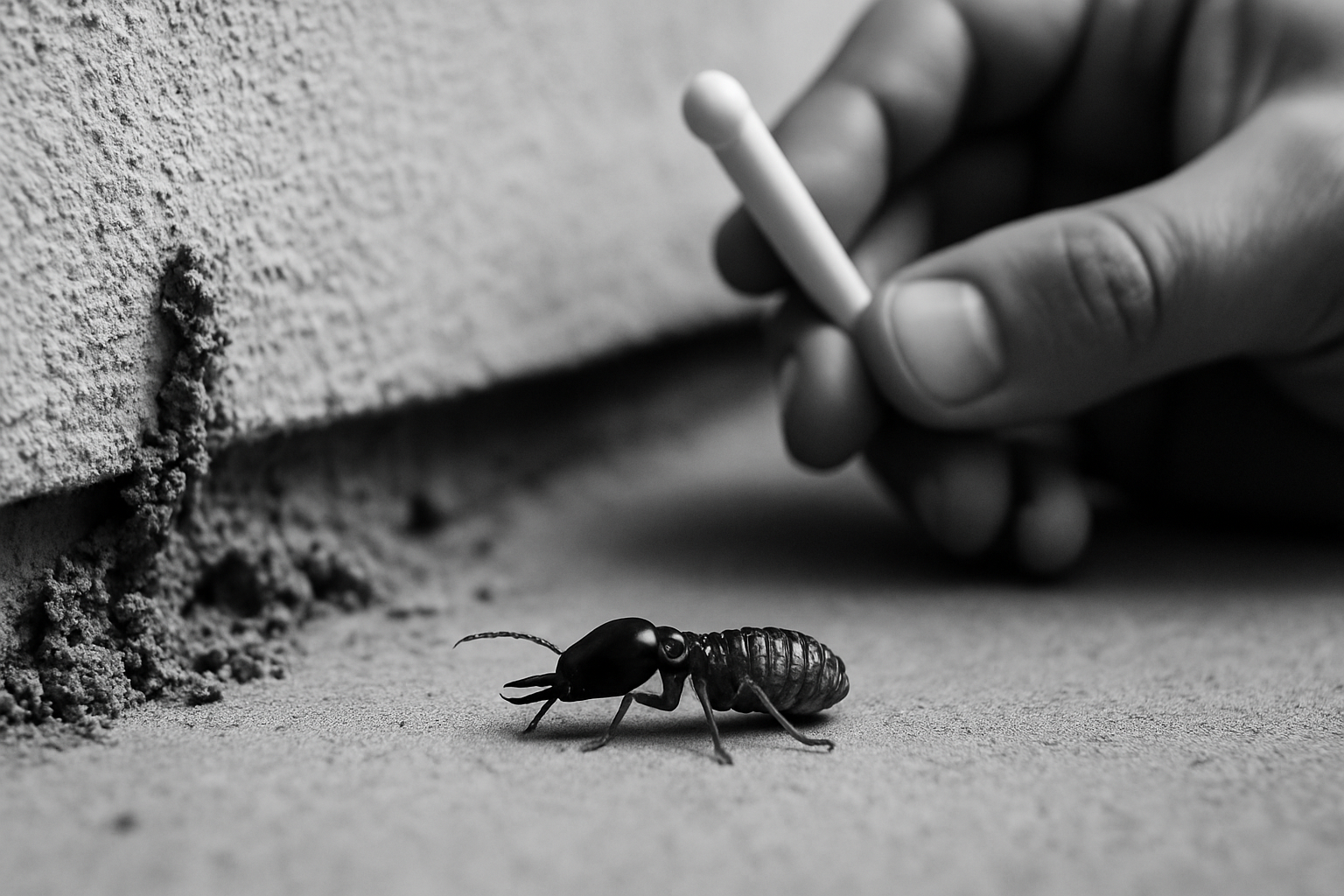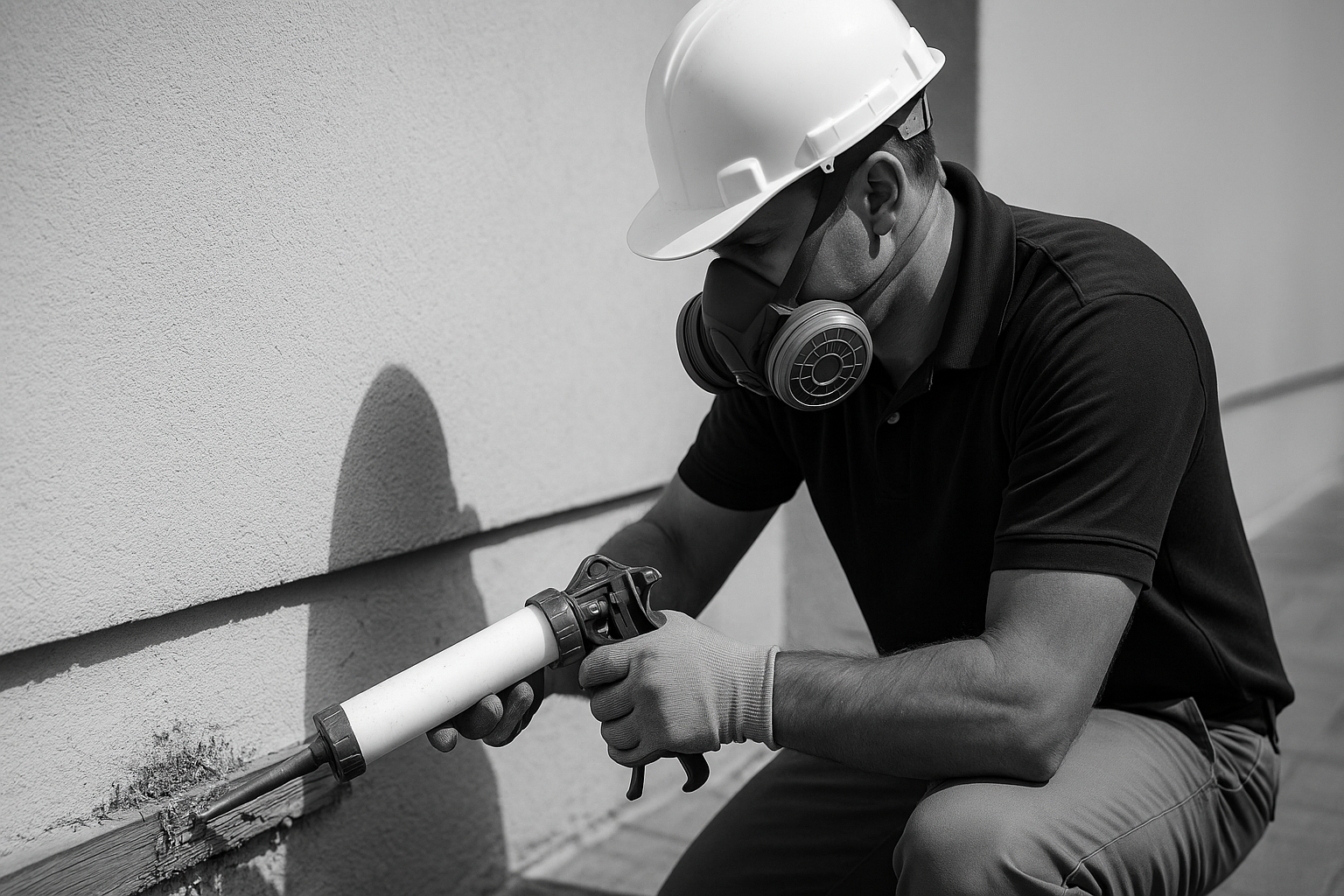Table of Contents
Understanding Termite Damage in Al Khawaneej 1
The termite damage signs Al Khawaneej 1 homeowners face are often subtle yet destructive. Termites silently compromise wooden structures, weakening foundations, furniture, and fixtures. Recognizing these signs early helps prevent costly repairs and protects your property’s value. Ignoring these **termite damage signs Al Khawaneej 1** can lead to significant structural issues.
Termites thrive in Dubai’s warm, humid climate, especially around greenery and wooden constructions found in Al Khawaneej 1 homes. Their colonies can grow rapidly, making prompt detection and treatment essential.
Key Signs of Termite Infestation
Spotting termite damage signs Al Khawaneej 1 requires careful observation. Some core indicators include:
- Hollow Sounding Wood: Tapping wood surfaces that sound hollow suggests termites have eaten through the core.
- Swollen or Bubbling Paint: Bubbling near wooden frames can indicate moisture buildup from termite activity underneath.
- Presence of Mud Tubes: Termites build mud tubes along walls or foundations for protection; spotting these is a critical clue.
- Discarded Wings: Swarms of termite wings near windows or doors often indicate a nearby colony.
- Cracked or Blistered Wood: Visible cracking or wood that breaks easily signals internal damage caused by termites.
- Uneven or Sagging Floors: Floors that sag or feel spongy underfoot could be damaged from termite consumption.
How to Inspect Your Home for Termite Damage Signs Al Khawaneej 1
Conducting a thorough inspection is an effective first step in termite management. Follow these practical steps:
- Visual Exterior Check: Examine exterior walls, wooden fences, and wooden outdoor furniture for mud tubes or damage.
- Interior Spot Check: Look along baseboards, window sills, and door frames for signs like blistering paint or small holes.
- Tap Test: Gently tap wooden surfaces with a screwdriver; hollow sounds suggest infestations.
- Use Moisture Meters: High moisture readings near wood can indicate termite presence, as they thrive in humid conditions.
- Inspect Crawl Spaces and Basements: These often overlooked areas are prime habitats for termites.
- Check Attics and Roof Areas: Wooden beams or rafters show damage if termites have spread upward.
Regular inspections every 6 months increase chances of early termite detection in Al Khawaneej 1. Early identification of **termite damage signs Al Khawaneej 1** is paramount for effective treatment.
Professional Termite Removal Services in Dubai
When you detect termite damage signs Al Khawaneej 1, professional intervention ensures effective and lasting control. Expert services provide comprehensive inspection, treatment, and follow-up.
Dubai-based companies such as Saniservice specialize in addressing termite damage signs Al Khawaneej 1 and providing tailored eradication solutions. Their expertise is invaluable in accurately assessing and resolving **termite damage signs Al Khawaneej 1**. They use approved methods permitted by Dubai Municipality and adhere to guidelines set by the Public Health Pest Control Section.
Professionals apply treatments like baiting systems, liquid termiticides, and soil treatments around property perimeters. They also provide advice on ongoing prevention and maintenance. This proactive advice helps homeowners mitigate future **termite damage signs Al Khawaneej 1**.
Step-by-Step Guide to Treating Termite Infestation Effectively
Treating termite damage signs Al Khawaneej 1 requires a systematic approach. Follow this actionable guide:
- Confirm the Infestation: Use visual and tool-assisted inspection to validate termite presence.
- Identify Termite Type: Subterranean, drywood, and dampwood termites require different treatments.
- Choose Treatment Method: Liquid termiticides for soil barriers, bait stations inside walls, or fumigation for severe cases.
- Prepare the Site: Remove infested wood and isolate contaminated materials.
- Apply Treatment: Professionals inject termiticides into the ground and wood or install bait traps.
- Ensure treatments follow Dubai Municipality regulations.
- Monitor treatment effectiveness.
- Post-Treatment Inspection: Schedule follow-ups to confirm termite elimination.
- Implement Preventative Measures: Modify moisture sources, improve ventilation, and seal entry points to avoid reinfestation.
Preventative Measures to Avoid Termite Damage
Prevention is smarter than remediation when it comes to termite damage signs Al Khawaneej 1. These effective precautions help keep termites at bay:
- Control Moisture: Fix leaks and improve drainage since termites thrive in damp environments.
- Seal Cracks and Gaps: Use weather stripping and sealants around doors, windows, and foundations.
- Maintain Proper Ventilation: Reduce humidity inside crawl spaces and attics.
- Avoid Wood-Soil Contact: Keep wooden elements elevated above soil level to reduce termite access.
- Regular Inspections: Schedule periodic checks with professionals for early detection.
- Use Termite-Resistant Materials: For renovations, select treated woods or non-wood alternatives.
- Clear Debris: Remove wood piles, tree stumps, and foliage near the home.
For a comprehensive guide on managing infestations, you can learn more about effective termite damage signs Al Khawaneej 1 solutions and how to implement them effectively. By implementing these strategies, you significantly reduce the risk of future **termite damage signs Al Khawaneej 1**.
When to Call Experts for Termite Damage Signs Al Khawaneej 1
Not all termite damage signs Al Khawaneej 1 require immediate professional action, but certain warning signals mean it’s time to contact experts:
- If you spot mud tubes or large quantities of discarded wings.
- If wood jolts easily upon tapping or shows visible cracks.
- If there are signs of structural sagging or furniture weakening.
- If DIY treatments fail to reduce termite activity.
- If you want a thorough preventive inspection before buying or selling property.
Prompt consultation with certified pest controllers in Dubai ensures minimal damage and peace of mind. They can provide expert assessment of any potential **termite damage signs Al Khawaneej 1**.
FAQ About Termite Damage in Dubai
How quickly can termites damage a home?
Termites can cause significant damage within months, depending on colony size and environmental conditions. Climate in Dubai supports rapid colony growth, making early detection vital.
Are termite treatments safe for pets and children?
Professional termite control uses Dubai Municipality-approved products applied with safety protocols to protect residents, pets, and the environment.
Can termite damage be fully repaired?
Yes, once termites are eradicated, damaged wood can be replaced or reinforced. Preventative measures help avoid future infestations.
Is termite insurance common in Dubai?
While some homeowners include termite protection in insurance, coverage varies, so it is best to consult your provider and prioritize prevention.
Conclusion and Call to Action
Recognizing termite damage signs Al Khawaneej 1 early is critical to safeguarding your home’s structural integrity. By following practical inspection steps and partnering with Dubai-based professional services like Saniservice, you can effectively manage infestations and prevent expensive repairs. Implementing preventive measures further strengthens your property’s defense against termites. Stay vigilant for **termite damage signs Al Khawaneej 1** to ensure long-term home safety.
Don’t wait for damage to escalate—schedule a full termite inspection today with trusted Dubai experts to protect your home and peace of mind.





